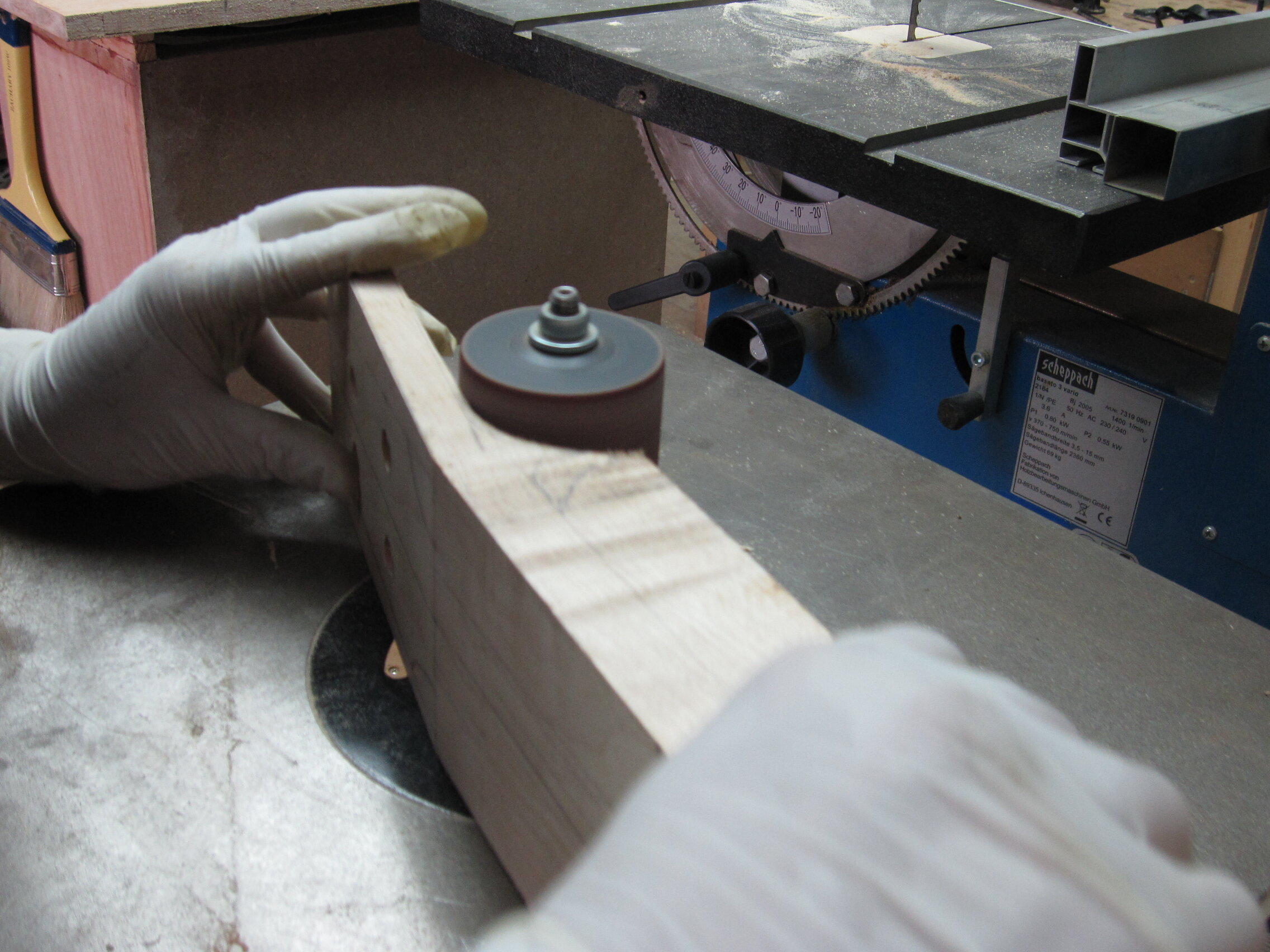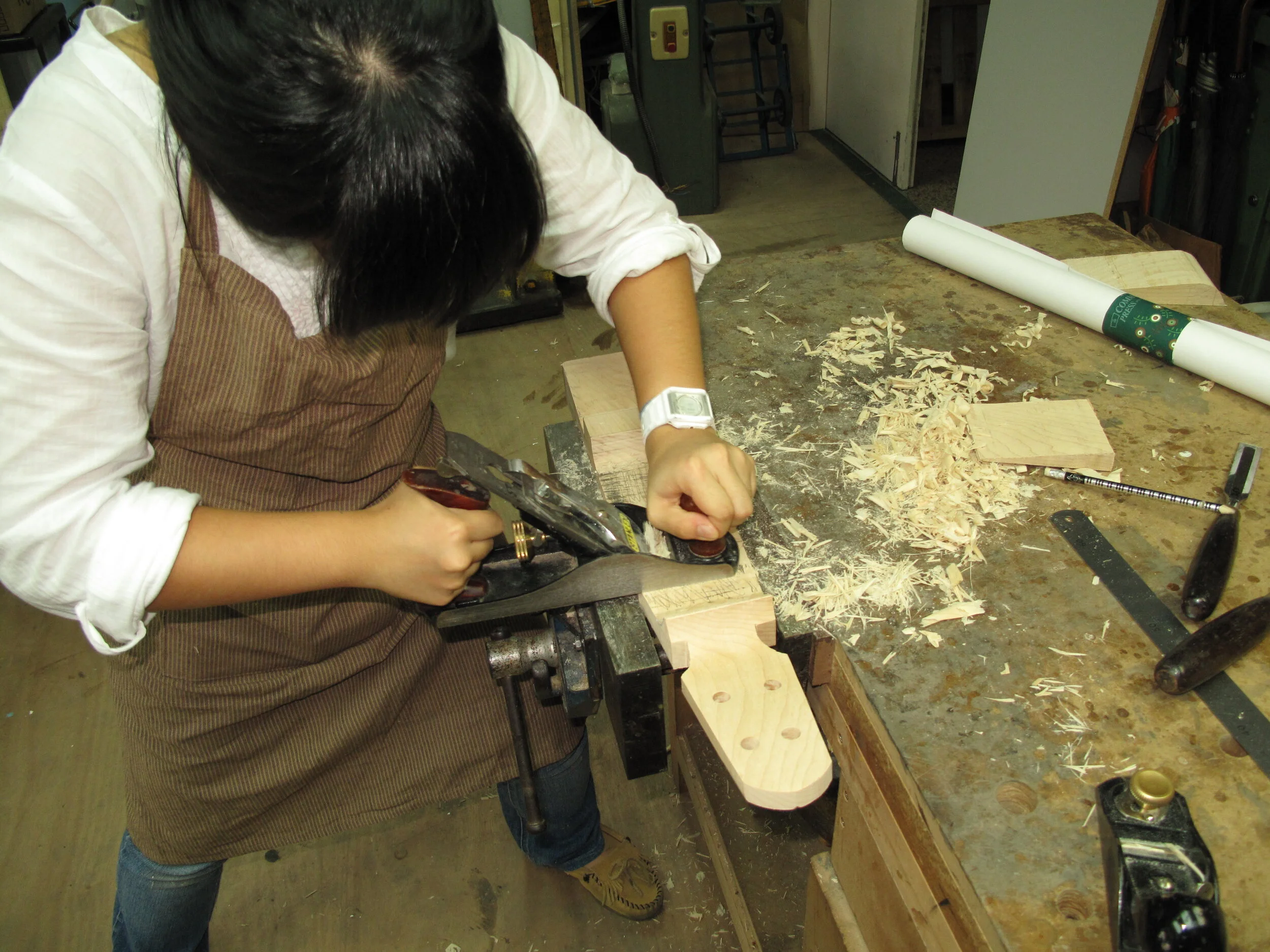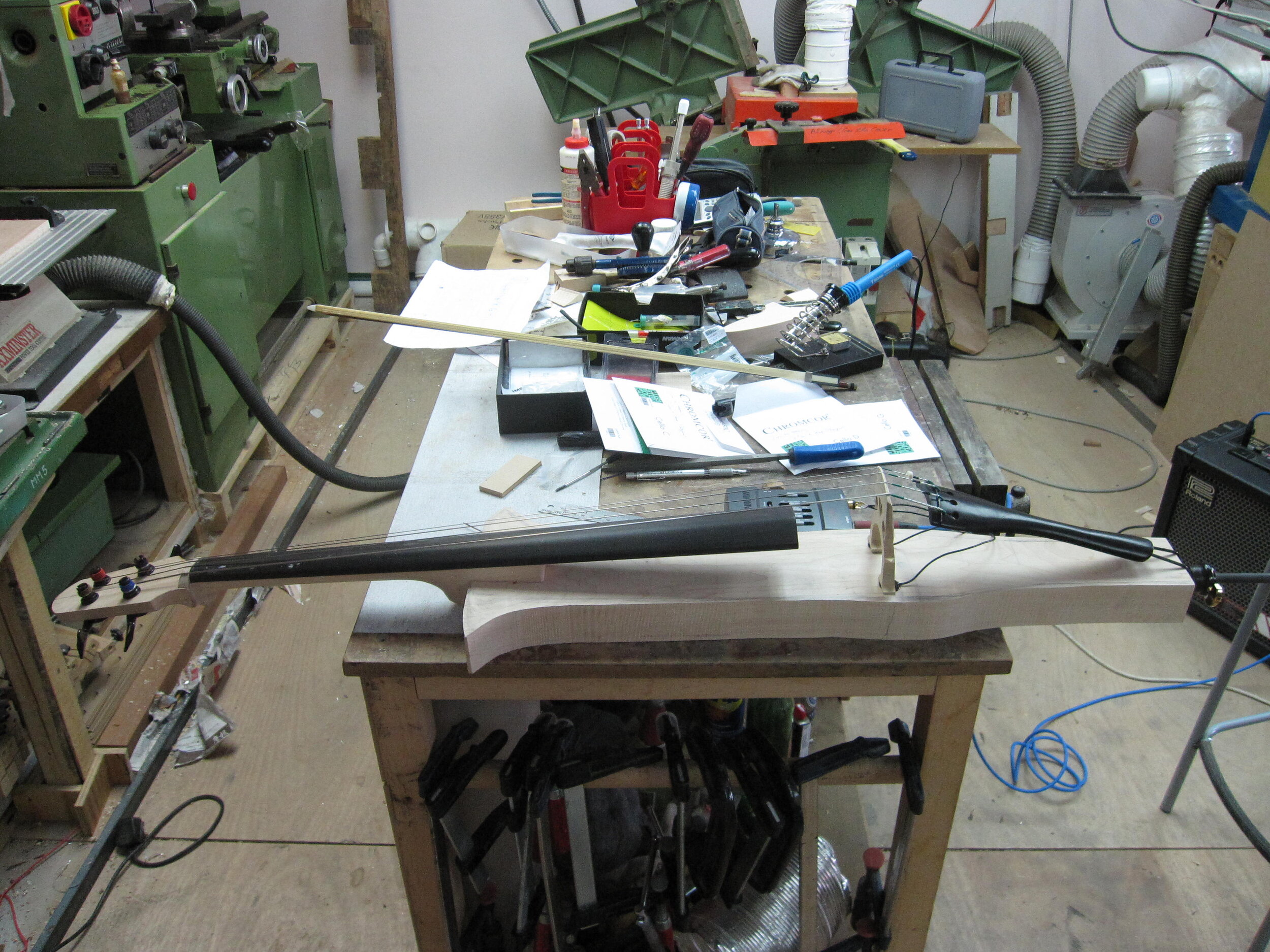Electric Cello
November 2011 - August 2012
Chinese Maple & Ebony
140cm x 18cm x 13cm
Individual Project
This was a personal project that occurred during an apprenticeship with a luthier. I played the cello regularly and found it difficult carrying it around Hong Kong. As first cellist and concert pianist, I found it very inconvenient to change from dress to pants to play the cello. I wanted more freedom in mobility and choice, thus, I designed and built my own custom, ergonomic cello. I tested it with the Hong Kong Philharmonic Orchestra.
The form is inspired by the simple, majestic, black shapes in Robert Motherwell’s Elegy to the Spanish Republic series. It is created so that the cello is in perfect balance and can stand independently against a wall. It is also streamlined so that it is ergonomic to travel to travel with, and women can wear skirts and dresses while playing it.






























One part of my apprenticeship was making this cello. Every day for ten months, I had sculpted a block of wood with a variety of tools and machines. The deceptively humble-looking chisel used to carve undulating forms was fiendishly difficult to master. I looked sadly at my drafting sheet, noticing the pristine curves, pioneered by the great Stradivari, giving each cello its own identity. I traveled to a studio to build an electric cello and learn woodworking techniques under a luthier’s instruction. I designed and built an electric cello that would solve the many ergonomic problems of conventional cellos – for instance, its bulky shape is difficult to maneuver when traveling between rehearsals and lessons. The wide cello body also forced me to alter my wardrobe and purposely wear pants to play it. This frustrated me, and I wasn’t willing to accept it. Once, after rehearsal, I slid past the flutists with the cello proudly on my back, suddenly, I heard a cacophony of objects hitting the ground. Mortified, I looked back, all the percussion instruments lay on the floor with pages of music scores draped on top of them. The impractical design and a series of similar, embarrassing, cello accidents compelled me to attempt a redesign of this instrument. Back in the studio, I wrestled and tugged at the wood with the blunt chisel. After weeks of trial and error, the scraping sound became crisper, and the prism-like wood chunks that had to be picked out with tweezers transformed into wafer-thin flakes that unpeeled in delicate loops after each slice.
I often played this cello during lessons and rehearsals – it is streamlined, it can stand against a wall without support, and I am able to wear dresses while playing it. Cellists from the Hong Kong Philharmonic and members of my orchestra section enjoyed its creative design so much that many even asked me to get the design mass-produced. While it solves many ergonomic problems, I feel more fortunate to have stumbled on the interface during this experience between playing music and the art of design. The process of drawing and inventing things with my hands excited me, and I became a more seasoned and ambitious musician, artist, and person because of it. I may not be creating any more custom-made electric cellos, but I have developed more scrupulous eyes and a habit of always meticulously examining small details and thinking of ways to improve the design. I am eager to dream big, design on a macro-level, and actualize my ideas. This project cemented my interest in design and led me to summer programs in Industrial Design, an undergraduate degree in Architecture, and now an MA in Interior Design. I am really grateful for this experience.




